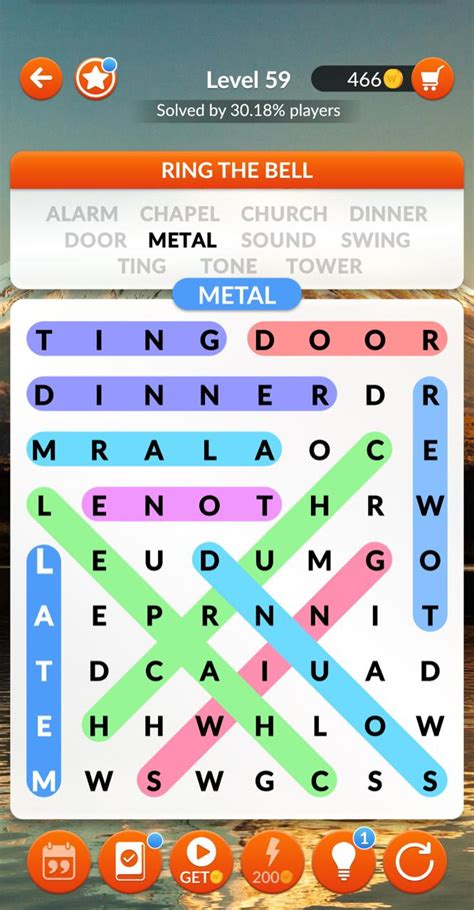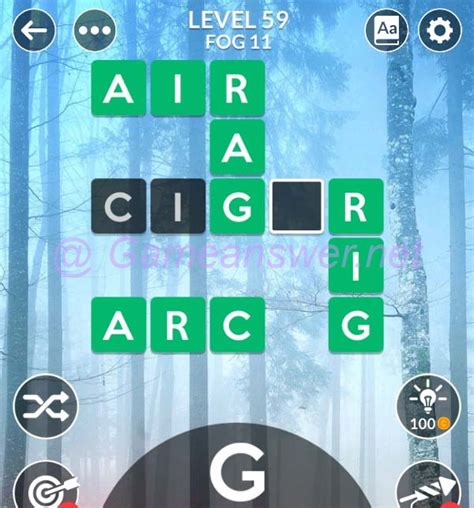lv 59 | word search level 59 lv 59 A normal ejection fraction of 55 to 65% is considered a sign of a healthy heart. People with an ejection fraction lower than 50% might be suffering from systolic heart failure. This is also . The private limited company organized under the laws of the Netherlands Graanberg B.V., also trading under the name ‘Club LV’, with its registered office and principal place of business at Middenweg 144 in (1097 BV) Amsterdam (Chamber of Commerce number: 34217142), hereinafter “CLUB LV”, is responsible for collecting and processing your .
0 · wordscapes 59
1 · word search level 59
2 · pictoword level 59
3 · level 59 wordscapes
4 · level 59 seat away
5 · level 59 hunter hitman
6 · level 59 brain test
7 · level 59 backrooms
Enchanted Runecloth Bag: 20-slot bag from Tailoring (5 Bolt of Runecloth, 2 Greater Eternal Essence, 2 Rune Thread) Big Bag of Enchantment: 24-slot bag from Tailoring (6 Bolt of Runecloth, 4 Large Brilliant Shard, 4 Enchanted Leather, 4 .
A left ventricle (LV) ejection fraction of about 50% to 70% is categorized as normal. A mildly reduced LV ejection fraction is usually between 41% and 49%. A reduced LV ejection .

Each of the modalities has its own advantages and disadvantages, and each has a certain range of accuracy. For an ejection fraction in the range of 50% to 55%, most of the .Ejection fraction measures your heart’s ability to pump oxygen-rich blood out to your body. In a healthy heart, the fraction is a higher number. A low number means that your heart has . Ejection fraction is a test your doctor can use to determine the percentage of blood that leaves a ventricle each time your heart beats, and to understand how well your heart works. A normal .A normal ejection fraction of 55 to 65% is considered a sign of a healthy heart. People with an ejection fraction lower than 50% might be suffering from systolic heart failure. This is also .
Ejection fraction (EF) is a percent measurement of how much blood the left ventricle (LV) pumps with each contraction. The left ventricle (LV) does not empty out with each contraction. Normally the left ventricle (LV) .Ejection fraction is simple to calculate; if the left ventricle contains 100 ml of blood at the end of diastole and 40 ml is pumped out during systole, then the ejection fraction is 40%. Thus, the ejection fraction is the stroke volume (SV) divided .
Normal (reference) values for echocardiography, for all measurements, according to AHA, ACC and ESC, with calculators, reviews and e-book. Left ventricular ejection fraction (LVEF) is the central measure of left ventricular systolic function. LVEF is the fraction of chamber volume ejected in systole (stroke volume) in relation to the volume of the blood in the ventricle at .
A normal heart’s ejection fraction is between 55 and 70 percent. This indication of how well your heart is pumping out blood can help to diagnose and track heart failure. It is important to note, however, that you can have a normal ejection fraction measurement and still have heart failure.
A left ventricle (LV) ejection fraction of about 50% to 70% is categorized as normal. A mildly reduced LV ejection fraction is usually between 41% and 49%. A reduced LV ejection fraction is usually 40% or less. Each of the modalities has its own advantages and disadvantages, and each has a certain range of accuracy. For an ejection fraction in the range of 50% to 55%, most of the commonly used tests, if carefully performed, are accurate within a few percentage points (e.g. 55% plus or minus 3%). Ejection fraction is a test your doctor can use to determine the percentage of blood that leaves a ventricle each time your heart beats, and to understand how well your heart works. A normal .
Ejection fraction measures your heart’s ability to pump oxygen-rich blood out to your body. In a healthy heart, the fraction is a higher number. A low number means that your heart has difficulty keeping up with your body’s needs.A normal ejection fraction of 55 to 65% is considered a sign of a healthy heart. People with an ejection fraction lower than 50% might be suffering from systolic heart failure. This is also termed Heart Failure with reduced ejection fraction. Ejection fraction (EF) is a percent measurement of how much blood the left ventricle (LV) pumps with each contraction. The left ventricle (LV) does not empty out with each contraction. Normally the left ventricle (LV) ejects between 50% and 70% of the blood it contains.Ejection fraction is simple to calculate; if the left ventricle contains 100 ml of blood at the end of diastole and 40 ml is pumped out during systole, then the ejection fraction is 40%. Thus, the ejection fraction is the stroke volume (SV) divided by the end-diastolic volume (EDV):
Normal (reference) values for echocardiography, for all measurements, according to AHA, ACC and ESC, with calculators, reviews and e-book. Left ventricular ejection fraction (LVEF) is the central measure of left ventricular systolic function. LVEF is the fraction of chamber volume ejected in systole (stroke volume) in relation to the volume of the blood in the ventricle at the end of diastole (end-diastolic volume). A normal heart’s ejection fraction is between 55 and 70 percent. This indication of how well your heart is pumping out blood can help to diagnose and track heart failure. It is important to note, however, that you can have a normal ejection fraction measurement and still have heart failure. A left ventricle (LV) ejection fraction of about 50% to 70% is categorized as normal. A mildly reduced LV ejection fraction is usually between 41% and 49%. A reduced LV ejection fraction is usually 40% or less.
Each of the modalities has its own advantages and disadvantages, and each has a certain range of accuracy. For an ejection fraction in the range of 50% to 55%, most of the commonly used tests, if carefully performed, are accurate within a few percentage points (e.g. 55% plus or minus 3%). Ejection fraction is a test your doctor can use to determine the percentage of blood that leaves a ventricle each time your heart beats, and to understand how well your heart works. A normal .
Ejection fraction measures your heart’s ability to pump oxygen-rich blood out to your body. In a healthy heart, the fraction is a higher number. A low number means that your heart has difficulty keeping up with your body’s needs.A normal ejection fraction of 55 to 65% is considered a sign of a healthy heart. People with an ejection fraction lower than 50% might be suffering from systolic heart failure. This is also termed Heart Failure with reduced ejection fraction. Ejection fraction (EF) is a percent measurement of how much blood the left ventricle (LV) pumps with each contraction. The left ventricle (LV) does not empty out with each contraction. Normally the left ventricle (LV) ejects between 50% and 70% of the blood it contains.Ejection fraction is simple to calculate; if the left ventricle contains 100 ml of blood at the end of diastole and 40 ml is pumped out during systole, then the ejection fraction is 40%. Thus, the ejection fraction is the stroke volume (SV) divided by the end-diastolic volume (EDV):

Normal (reference) values for echocardiography, for all measurements, according to AHA, ACC and ESC, with calculators, reviews and e-book.
wordscapes 59

chanel shower gel factory 5

June 18, 2020/ Nevada. The Women’s Alzheimer’s Movement Prevention Center at Cleveland Clinic Launches. New clinic is the first in the nation specific to women for Alzheimer’s disease prevention and is now taking appointments at 833.WOMEN.AD. Media Contact. MacKenzie Ruta | 702.219.5601. Media Downloads. images: 0. video: 0. audio: .
lv 59|word search level 59



























